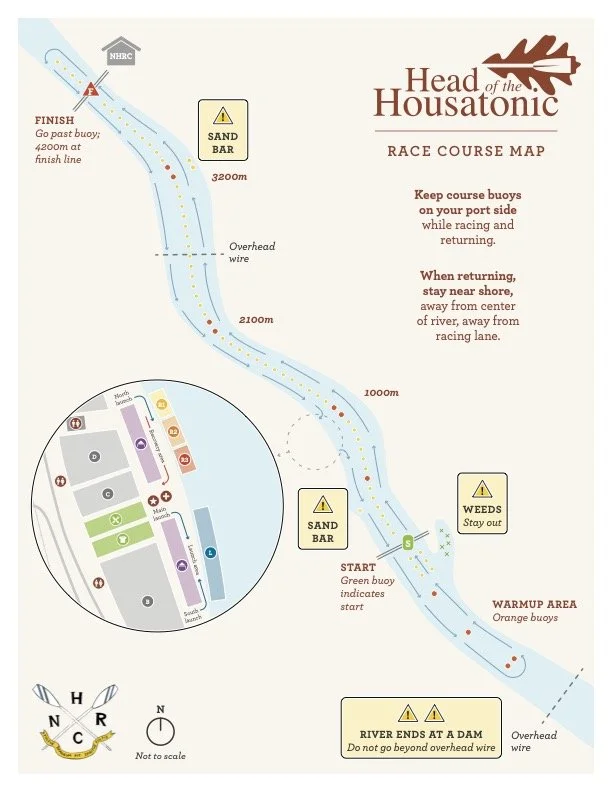course map & launching / head of the housatonic
Competitors at Indian Well State Park launch from the beach by walking boats into the water. The water temperature is comfortable and the bottom is sandy. There is no dock. Please familiarize yourself with the following launch/land procedures:
Crews will be called to the launch area approximately 45 minutes before their race in bow number order. No crews will be allowed to launch more than 50 minutes prior to their event.
Crews may not bring oars to the beach more than one hour before launching. Beach space is extremely limited.
Safety checks on equipment will be preformed by Referees and volunteers as you approach the beach. Please check your equipment before joining the launching queue.
Extra beach support is available to help you retrieve oars.
DO NOT leave shoes on the beach. All crews including singles will need to either take their shoes in the boat or have shoes collected by the team and removed from the beach.
Be efficient with your launching and landing and courteous to other crews.
Course: The course map (above) will be posted at several locations near the beach and shows the location of all buoys and obstructions. All competitors should review the map carefully and observe the traffic pattern. A buoy line is placed up the middle of the river and crews must keep buoys on their port side at all times—both during racing and in returning to the park. Larger yellow buoys denote obstructions and care should be taken to avoid getting too close to them.
Warm-up: The warm-up area is downstream of the marshaling area. Crews should always stay to the starboard heading either downstream (south) or upstream (north), keeping the buoys on their port side. Do not cross over between the buoys—always go to the end before turning. There is a dam at the end of the warm-up area. Do not row beyond the overhead power lines.
Start: All crews are responsible for being in the marshaling area at least 10 minutes prior to the start of the race. The marshaling area will have a line of large red/orange buoys separating the boats going downstream from those heading upstream toward the start. The starting area is clearly marked with a chute of smaller yellow buoys leading to a large green buoy indicating the Start.
Finish: The Finish Line is marked with a large red triangle buoy across from the New Haven Rowing Club dock. A horn will sound to signal that each crew has crossed the finish line. Crews must continue paddling and proceed past the end of the string of small buoys before turning around.


